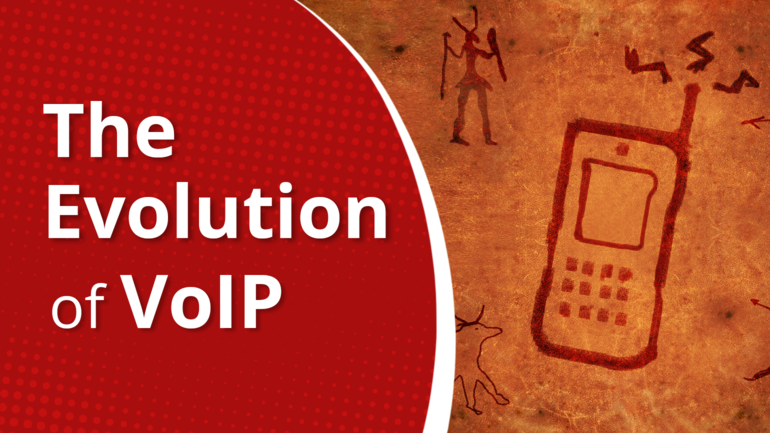More and more companies are embracing the flexibility of remote work, allowing their employees to be connected wherever they are in the world. In this article, we’ll discuss how to implement VoIP in a remote work environment, including the benefits of utilizing VoIP for remote work, and the different types of VoIP systems available.
Euro-Center, one of the world’s leading companies in the fields of medical assistance, travel assistance and insurance claims’ handling, has formed a strategic alliance with DIDWW, a global telecoms operator offering premium quality VoIP communications and SIP trunking services. By leveraging DIDWW two-way SIP trunking solution, this partnership ensures high quality voice services throughout Euro-Center’s medical assistance and travel insurance business. With their global presence, it was crucial for Euro-Center to find a comprehensive cloud solution as opposed to relying on local PBX systems in each of their 11 regional offices. Consequently, the company chose to partner with Genesys Cloud and collaborate with DIDWW to meet the goals of Business Continuity Planning (BCP). Euro-Center selected DIDWW due to the operator’s unique coverage in countries not typically covered by other global SIP providers, such as South Africa, Thailand, Brazil, and Turkey. As Euro-Center has its second-largest office in Thailand, securing premium…
Navigating workplace communications is challenging for business owners. Choosing between PSTN and VoIP is complex. PSTN offers reliability and call quality, while VoIP provides flexibility and scalability. VoIP integrates with tools and supports remote work. PSTN is secure and compliant, but VoIP can be secured with measures. PSTN excels in emergency services, but VoIP is improving.
Telinta, a global leader in cloud-based softswitch and billing solutions, and Commio, a leading VoIP origination and termination provider,have teamed up to meet the needs of VoIP service providers. The two industry leaders will jointly present a webinar for VoIP service providers explaining the benefits of using Commio’s high-quality services together with Telinta’s platform. Save the Date: Tuesday May 23, 2023 11:00am Eastern Time (UTC-04) To Register: telinta.com/Commio-Webinar Using Telinta’s cloud-based TeliCoreTM softswitch and billing platform, VoIP service providers can easily use Commio’s VoIP Termination, Origination and Messaging to offer Hosted PBX, SIP Trunks, Business and Residential VoIP, Mobile or Desktop VoIP calling, and other popular services. Using Commio, you can easily select from 40+ underlying carriers with built-in redundancy. With tools to monitor, troubleshoot, and solve common communications issues, access to a U.S.-based team of responsive experts, and built-in intelligence to save money and improve quality, Commio delivers a better way to communicate. …
Ooma Office enhances productivity for small-to-medium-sized businesses with new advanced features, such as Call Screening, Distinctive Ringtones, and more. Offering efficient tools to manage calls, texts, faxes, and videoconferences at no extra cost.
We’ve come a long way since mankind first used smoke signals to communicate, and even farther since cavemen drew pictures on walls. Today, we’re living in a world where we can communicate with anyone, anywhere in the world. Telecommunications has changed dramatically throughout the years. Let’s look at how it grew from its humble origins to what it is now. Rock carvings Petroglyphs are more commonly found than pictographs, and these images were created by carving, engraving or scratching the rock’s surface. Often, these images were important forms of pre-symbol writing and were used in the earliest forms of communication and signage. The oldest art in this particular category is the Bhimbetka Petroglyphs Cupules, in the Auditorium cave situated at Bhimbetka in India, that date back to the Acheulean period, which began between 1.7 million and 1.5 million years ago. Cave paintings Some of the earliest forms of communication are…
When it comes to the security of your business, you can’t afford to take any chances. But what are the best ways for you to protect your data and make sure your employees are safe? One way is by using a Virtual Private Network (VPN). With more and more employees working from home, many IT professionals may decide to route Voice-over-IP (VoIP) traffic together with the user’s other data through a VPN. Using a VPN for VoIP calling provides additional levels of security and privacy, assisting both in-house and remote workers in remaining secure. What is a VoIP VPN? Simply explained, a VoIP VPN will build a secure tunnel through which all of your VoIP communications will traverse. As a consequence, you’ll be able to circumvent firewall limitations and make calls in a secure manner. Additionally, this type of service will conceal your actual IP address and allocate a…
When you hear the word “automation”, what do you think of? Increasing effectiveness and efficiency in business processes, right? One of those processes is communication with clients. The move to automate many facets of business communications has been steadily gathering pace. This advancement offers a variety of benefits that are essential for a business to prosper. Everyone involved in the communication process, from the client to the carrier, benefits from automated VoIP. With the advancement of technology, an increasing number of businesses are opting to automate their business communications. What is VoIP automation? In basic terms, VoIP automation is the use of technology to automate the execution of repetitive processes and activities wherever possible and desired, in order to save costs, improve productivity and simplify customer contacts. Call automation systems automate everything from dialing numbers to sending out messages, allowing your employees to speak with more people in…
Telinta, a global leader in cloud-based softswitch solutions for VoIP service providers, today announced several important enhancements to its white label Desktop Softphone and WebRTC solutions. Telinta’s brandable Desktop Softphone is a software application for Windows, Mac, and Linux computers, enabling VoIP service providers to offer both inbound and outbound VoIP calling, plus messaging. The company’s brandable WebRTC solution can be accessed by users via a convenient multi-language web-based portal, without the user needing to install software. New features added to these solutions include an optional Operator Panel and Busy Lamp Field (BLF), enabling an office receptionist to see at a glance if a team member with an extension on the same PBX is busy with an active call. Other features include both attended and unattended call transfers, placing calls on hold, SMS and free on-net messaging, phonebook, call history, do not disturb, and more. VoIP…













